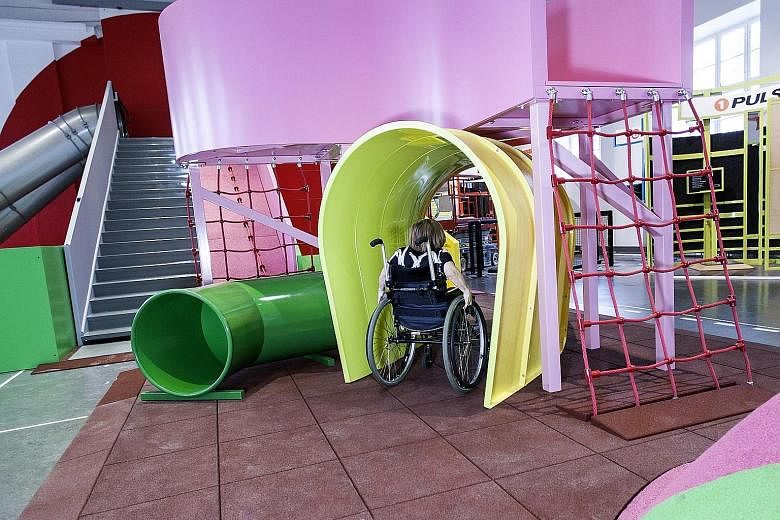When a museum in Stockholm did a major revamp of its science centre, it decided to offer accessibility not only in terms of physical infrastructure but also in how information was presented.
The MegaMind centre at Sweden's National Museum of Science and Technology - known as Tekniska Museet in Swedish - opened last September.
Visitors can access information on about 40 installations in different ways, depending on needs.
At each installation, there is a tablet device placed on a special stand, with headphones attached to the stand. The tablet displays the information visually and headphones give it aurally.
There is sign language for visitors who are deaf; text that is read aloud and in different contrasts and font sizes for those with poor vision; and text with symbols for those with cognitive disabilities.
A visitor can choose these options manually or slot a card into the device. The card stores information on his access preferences, and the interface on the tablet device then changes accordingly.
The museum, which is the first in Sweden to use the IT system, aims to be "every little genius' favourite place" - and by "every", this includes children with special needs.
So, when the chance came a few years ago to revamp its 30-year- old science centre, it wanted to live up to its organisation's values, which include equality, diversity and accessibility. Communications officer Anna Gisslen said: "It's not easy to make old things accessible. When starting something totally new, it meant we had the chance to get things right from the very beginning and accessibility became a key component."
She cited 2015 national statistics which show that 64 per cent of the general population in Sweden took part in cultural events, but only 48 per cent of people with disabilities did so.
"Studies have shown that people with disabilities don't think of going to museums because they don't think they are accessible for them. We want them to know that MegaMind is for all," she said.
MegaMind aims to inspire visitors to be creative and boost their self-confidence. Many activities are designed such that children of varying needs can benefit.
For instance, one activity involves creating a digital image with just eye movements. No hands are needed to move a paintbrush or mouse.
In another activity, children "virtually sculpt" a shape on a screen by moving their hands in front of it; no mouse or drawing tablet is used.
In Singapore, museums and the Science Centre have disabled- friendly infrastructure such as wheelchair lifts and ramps, as well as guided tours and programmes for visitors with special needs. But welfare groups said that although tourist attractions have been making their spaces more accessible, more can be done for non-wheelchair users with other disabilities.
Disabled People's Association executive director Marissa Lee Medjeral-Mills said: "Too often, accessibility seems to be equated with wheelchair accessibility, as opposed to building a visitor experience that's enjoyed through various ways." She added: "Being accessible includes having accessible services, programmes, displays and websites."


